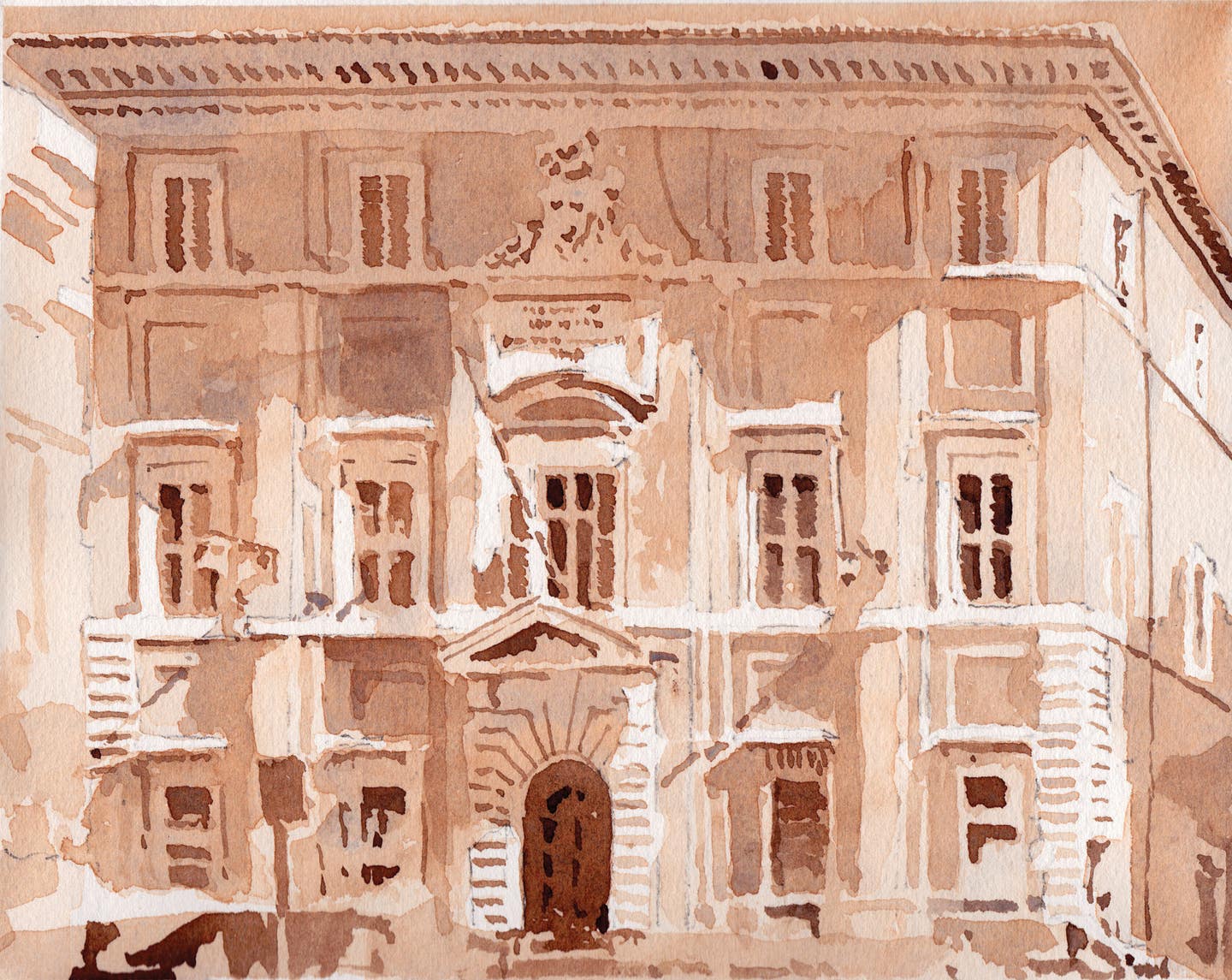
Features
Book Review: Robert Venturi’s Rome
As an Amazon Associate, we earn from qualifying purchases made through affiliate links.
Robert Venturi’s Rome
By Frederick Fisher and Stephen Harby
ORO Editions, 2017
112 pages, softcover
This dense little book is a serious investigation, by two architects, of Venturi’s seminal post-modernist volume Complexity and Contradiction—a critical reading of one of the most important architectural credos of the mid-20th century. Tracking the original book’s chapters while illustrating Venturi’s Roman case studies in rich sepia wash, it also serves as a guidebook to Rome for those with similar interests.
I asked authors Stephen Harby and Fred Fisher about their 10-year book project. Fisher, Harby, and Venturi each were Rome Prize recipients; Venturi’s book was largely written during his time at the American Academy in Rome. Almost 50 years later during his Rome Prize stay, Fisher was studying mid-century museum additions, but thought to draw Rome’s monuments as selected by Venturi, subsequently displaying the drawings during his open studio. Harby, an inveterate traveler, architectural watercolorist, and Rome scholar, taught the Yale School of Architecture’s Rome studio for many years. Their friendship allowed them to collaborate, with both contributing to the writing and the drawing.
Fisher says that he is “interested in drawing as an analysis of the abstract ideas of a building, drawing what can’t be seen but rather inferred,” while Harby’s inspiration is of the play of light and shadow on architectural forms. Harby found that by painting each building he gained a deeper insight into Venturi’s illustrations. One of his favorite examples is the facade of Bernini’s Palazzo di Propoganda Fide. He found that “the pilasters lean in as they rise, indicating that Bernini thought of them as part of the facade, not applied to volume as Venturi’s willful double reading of the facade suggested.”
Such astute dialog and illustration fills Robert Venturi’s Rome and makes it a rare pleasure. I can’t wait to visit Rome, book in hand, and retrace the discoveries of these three architects for myself.








